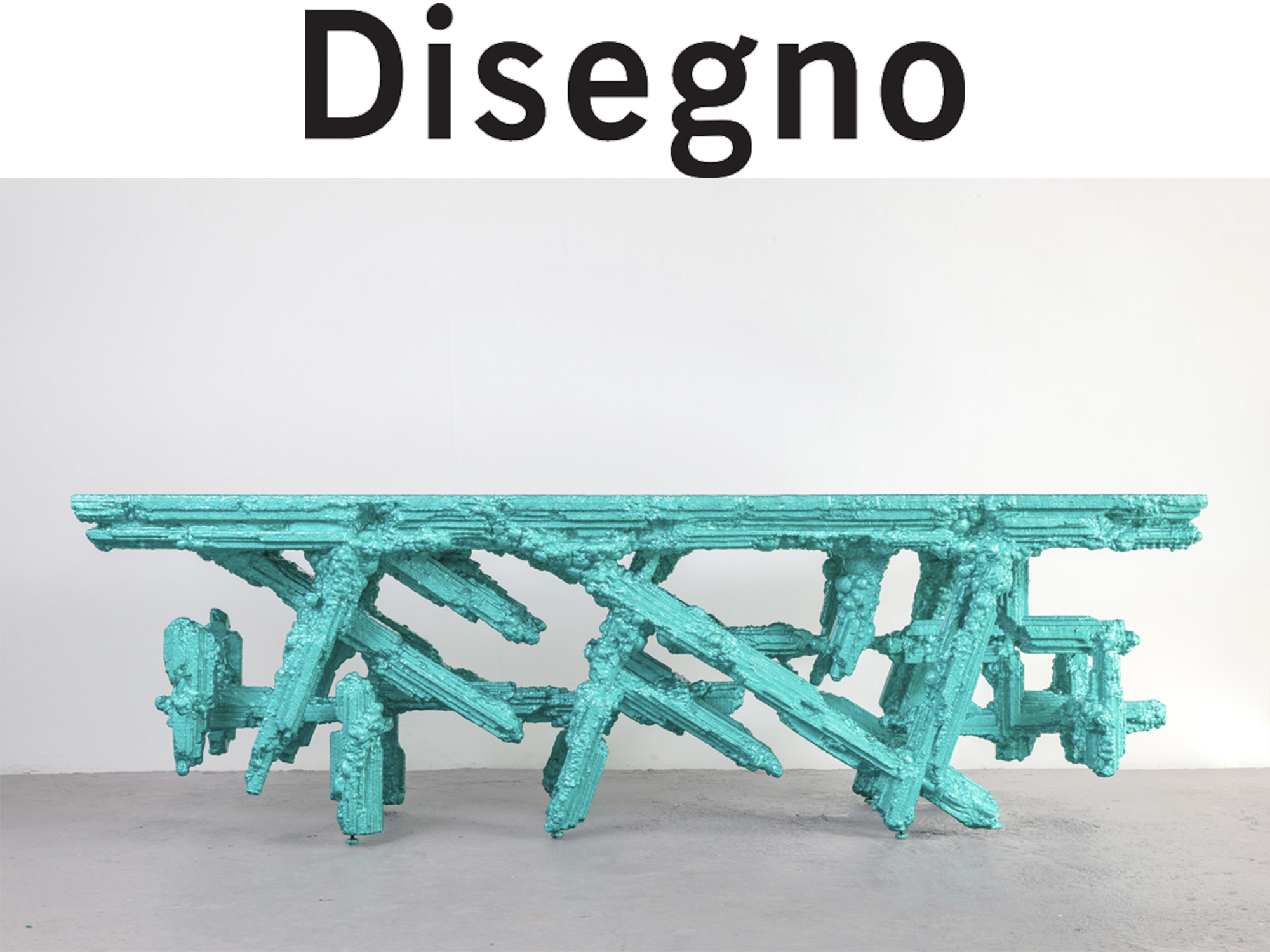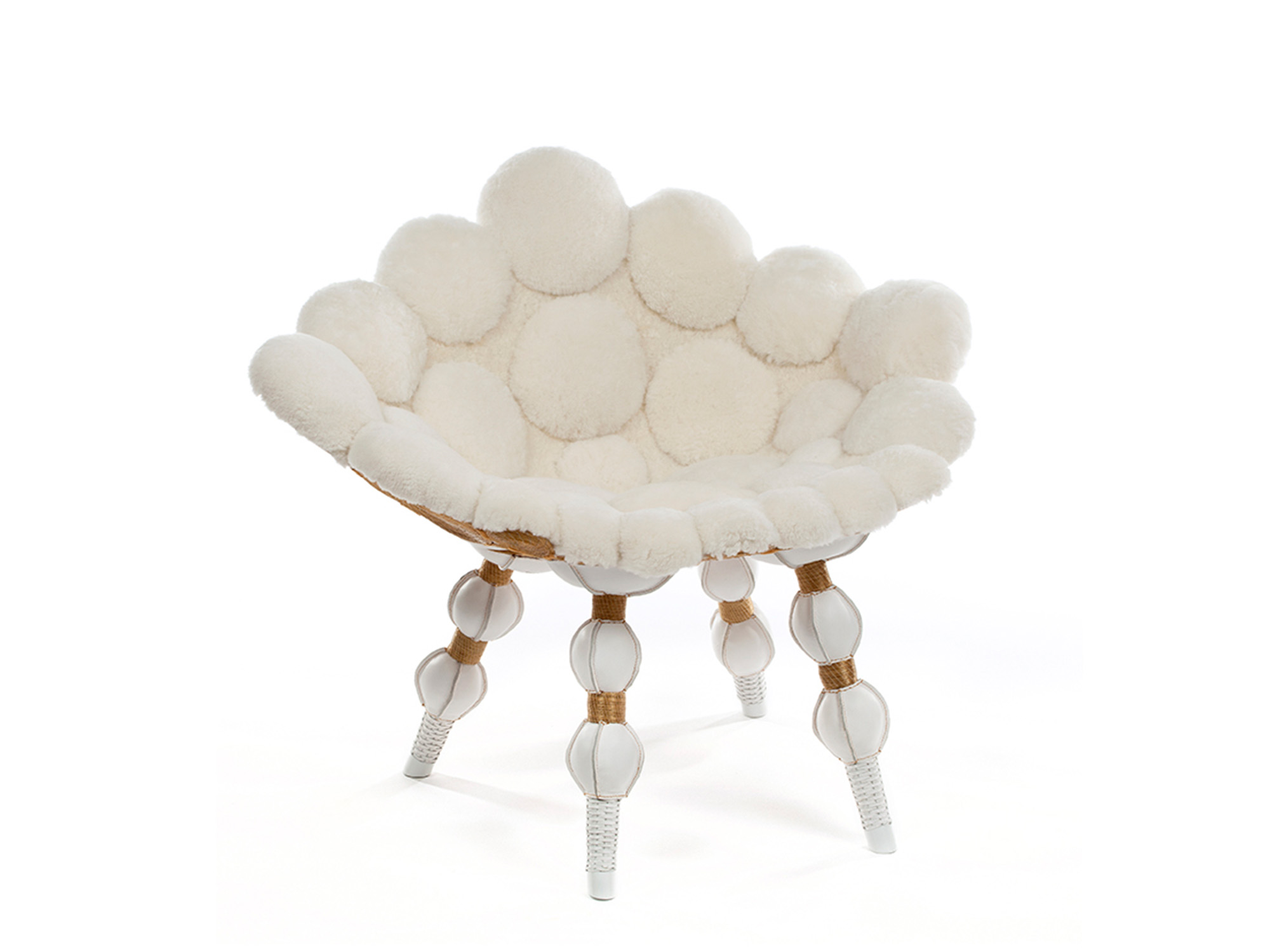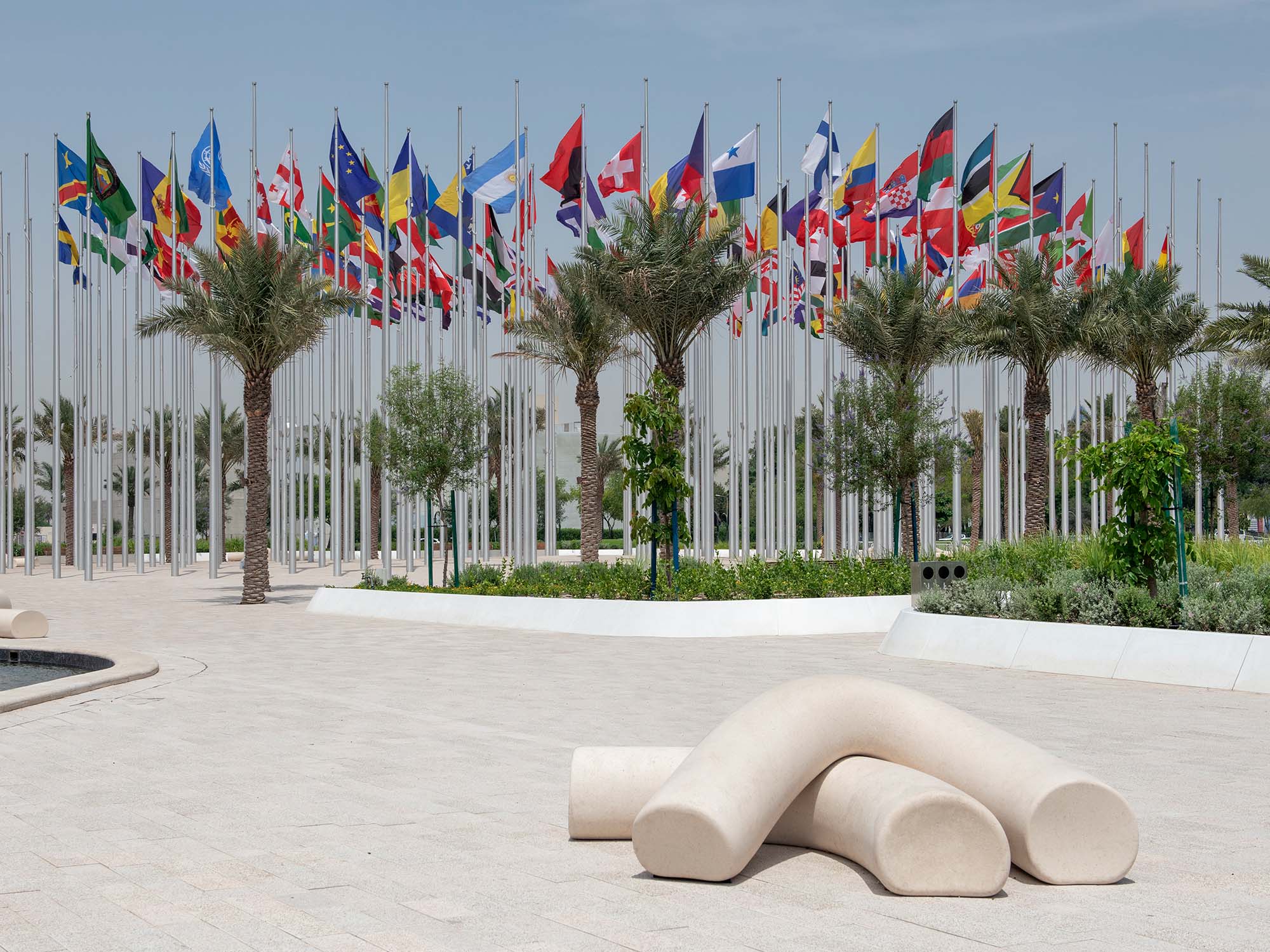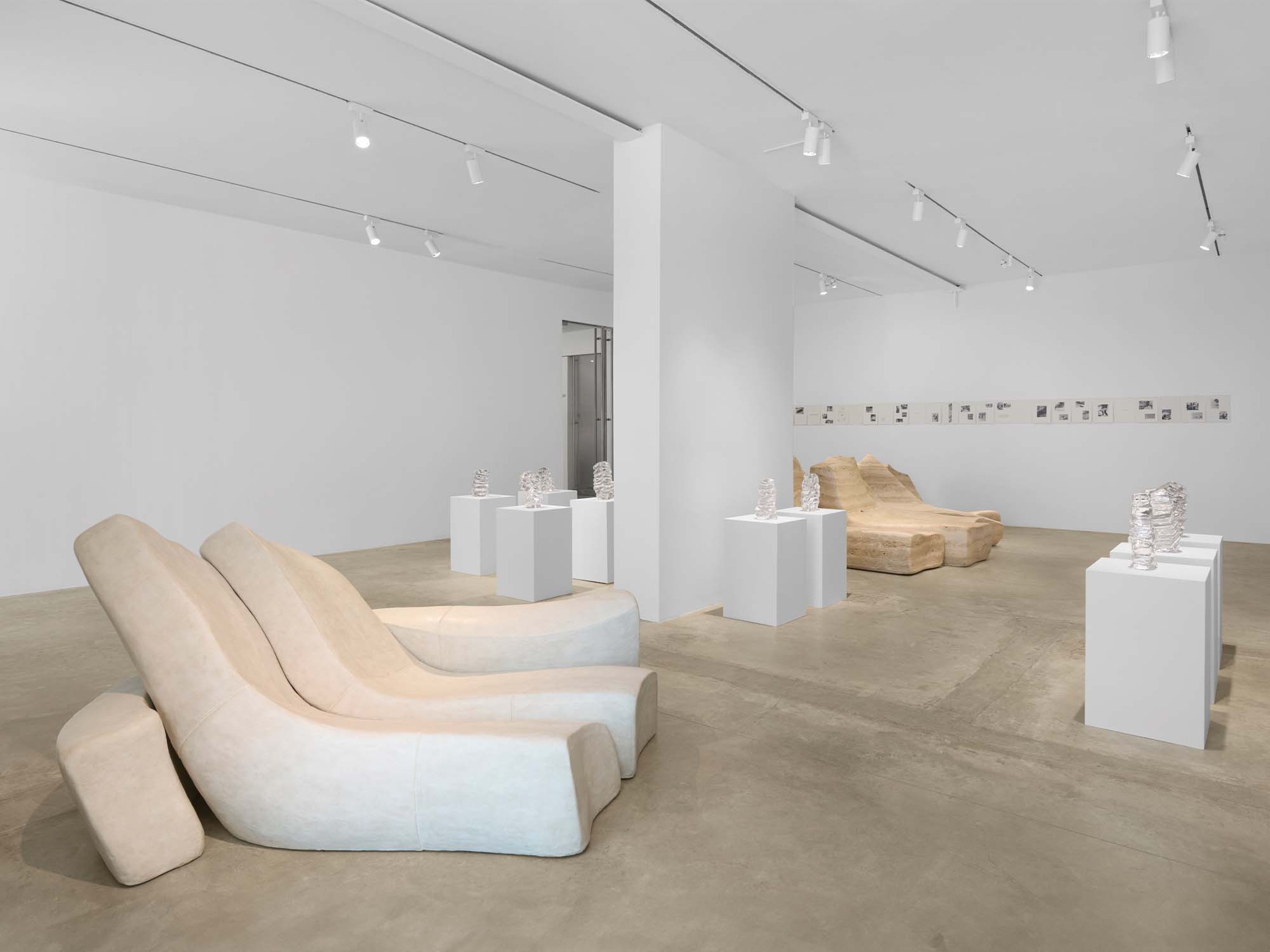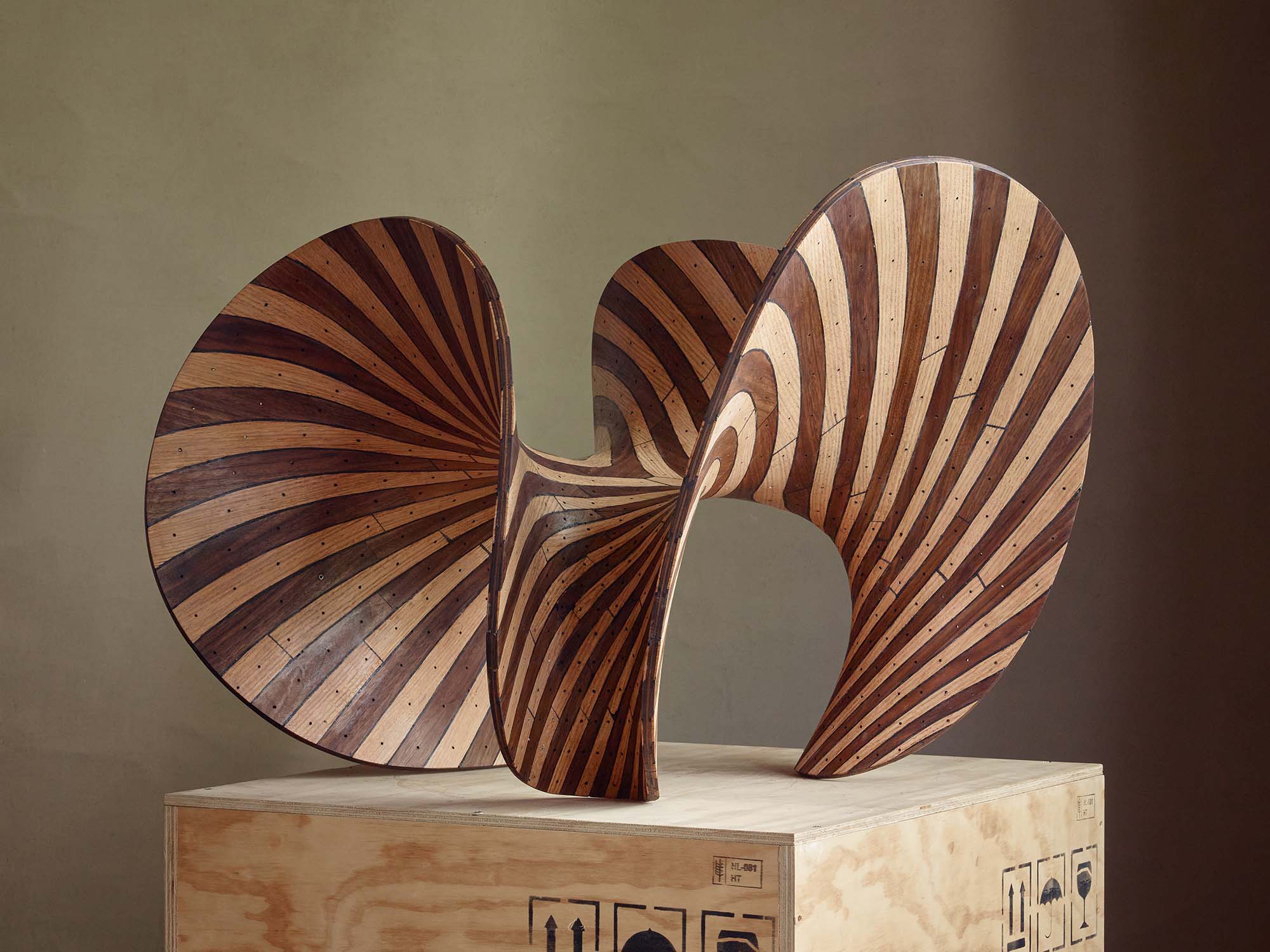Introduction and interview by Benoît Loiseau
Detroit-based US artist and designer Chris Schanck is known for his biomorphic furniture and unorthodox approach to materials. Having initially trained as a sculptor, Schanck practiced as an artist before continuing his education at the Cranbrook Academy of Art in Michigan in the early 2010s, where he transitioned to design.
While at Cranbrook, Schanck developed his signature Alufoil technique, which consists of sculpting pieces out of wood and industrial foam, sealing them in a resin-based coating, and finally covering them with layers of confectioner’s foil, applied in small pieces. This approach has earned him a significant following, including early fans such as William Sofield and Peter Marino, who went on to commission pieces for the Tom Ford Madison Avenue flagship and the Dior boutique in Manhasset, New York, respectively.
For his first major solo exhibition Unhomely, which recently opened at Friedman Benda in New York, Schanck has produced a series of 15 pieces where furniture-making enters into dialogue with sculpture, punctuated by references to fantasy and science-fiction, and diverse inspirations from Brutalist and Art Deco architecture to ancient iconography. In the Friedman Benda series, Schanck has explored new materials and techniques such as cast bronze and resin painting. Flocking is another technique with which Schanck has experimented; originally associated with the US automotive industry, it is a surface treatment that consists of applying nylon fibre to a substrate – a nod, from Schanck, to the industrial legacy of the Motor City.
The collection also incorporates figurative elements including a silver, head-shaped cabinet; a gold, kneeling anthropomorphic figure holding a shallow dish, and a highly-sculptural, copper-coloured shelving structure evoking a dystopian, overgrown biotope. Below, Schanck speaks to Disegno about his varied references and community-based design process.
What was your approach for this new series, presented at Friedman Benda?
This show is about bridging the mythical and otherworldly with the real world that surrounds me every day. In creating this body of work, I had the chance to work with new materials, processes, and forms. There’s really nothing more satisfying than getting to take my work to a new place and having the chance to not only iterate, but to think in whole new ways. And this body of work really let me do that.
Can you tell me about the piece Banglatown, a highly sculptural shelving structure which seems to evoke a kind of dystopian, overgrown biotope?
This piece was really inspired by my neighbourhood in Detroit, which is often referred to as Banglatown because of its large Bangladeshi population. My street is full of single family homes with nice gardens in front, and in the summertime there are kids running everywhere. However, the unique qualities of these homes are the informal gardens that my neighbours have built on their roofs. Or they’ve taken abandoned lots and made lot-sized gardens. [In Detroit] things are still unregulated – I don’t know that you can get away with this anywhere else. It’s not just raised gardens, it’s whole structures that grow, sprawl, and graft onto existing or abandoned properties. To me, my neighbourhood very much feels like a living organism. It’s cultural and it creates a kind of network or system of living. I wanted to explore all of that in this piece.
You studied sculpture at the School of Visual Arts, then a decade later went to study design at Cranbrook Academy of Art in Michigan. Your practice very much seems to operate in the space between art and design. How do you understand the conversation between the two, and how did your focus shift to furniture design?
In short I wanted to make sculptures you could touch. I was working at MoMA and volunteered to clean the permanent collection. So I found myself with complete VIP access, with no guards or members of the public nearby; just me, a Brancusi [sculpture] and a feather duster. The experience of interacting with those pieces was powerful and influential. I wanted to make sculptures you could touch and interact with. I wanted more people to have that experience. But to me, the experience of artist versus designer really comes down to the work being singular versus collective. It takes a community of people to make the work that I make.
I remember from visiting your studio-warehouse in North East Detroit that you have a very diverse group of people working with you. How would you describe the atmosphere of your studio?
I moved out of my home-cum-studio two years ago into a 3,200sqft commercial building just a mile from my home. Twenty-five people work in the studio right now and I’ve been growing a core crew of assistants for five years. About half the studio are a group of Bangladeshi ladies from my neighbourhood. When I started the studio people came in from across the street out of curiosity. I slowly took on a couple assistants and it grew from there. A woman who started in the studio this past summer moved here from Bangladesh, where she managed quality control for a leather factory. She’s crazily overqualified and understands the materiality of what we do. Not everyone is an expert, so amateurs and young students work side by side with seasoned assistants to learn our methods and practices peer-to-peer.
How do you sustain this kind of collaborative environment?
To be honest, I didn’t know how much I would enjoy the collective experience of running a studio because I’m a fairly insular person. And for a while I was running the studio out of my home in Detroit so there were always people at my kitchen table; so I had very little privacy and the work lived with me. Building a studio really involved learning about other people and what they need to be happy, creating a positive culture, and thinking about diversity and everyone’s lived experiences. They didn’t teach me any of that in graduate school, but it’s all critical to the success of the studio. Because the studio began in the context of my home, we all had to learn to trust and respect all of our individual roles within a very intimate setting. As we grow we’ve taken those core principles with us to our new studio.
You have described your pieces as “proudly irregular”, and as “spectacles of imperfection”, which somehow contrasts with the design industry’s obsession for perfection and the reproducible. How do you conceive experimentation in your work? Do you ever feel restricted by the demands of the industry, and if so, how do you navigate them?
Detroit has a mix of manufacturing history, architectural history and manual skill; that’s all enhanced by all of the communities that call Detroit home. I’ve always been in awe of the manufacturing industries’ mythical scale of production but we exist on the opposite end of that spectrum at my studio. We’re more of a medieval craft guild practicing alchemy. Each piece is first conceived as a sculpture, and then I work out how it can be engaged as a design object.
Finally, you have talked about the sci-fi references in your work. I find this interesting in the context of Detroit which, not too long ago, was still one of the fastest growing cities in the world: a high-tech hub and “city of the future”. Recently it has been most often portrayed in dystopian terms. What do you make of these references, and in the contemporary reality of your surroundings?
Firstly, I’m from Texas, so take my answer with a grain of salt. Detroit is definitely the city that has made my life and work possible. I had been living in New York for a long time before I got away to Michigan for graduate school and then stayed in Detroit. But many Detroiters, artists included, live on the extreme fringes of society, and there is nothing easy about it. The city is in flux, one day it’s total calamity and the next it’s like walking in a beautiful alien landscape [populated by] inspiring people building their own realities. It’s hard to define what the “new” Detroit is because I don’t know where “new” really starts. But in the time I’ve been here I’ve seen a lot of change. It does feel like there is a “new” Detroit growing with new money and those things may be good for the economy. But it’s not the most interesting to me, and it’s [a development that is] mostly concentrated in the central neighbourhoods. What is interesting to me is what I see within my little orbit between home and studio: the immigrant population is growing, with it new colours, patterns, designs, and traditions become part of the community. That changing landscape is inspiring and hopeful
